Day 1 Shanghai → Addis Ababa ★Departure Day
All day
In the evening, all tourists will gather at Shanghai Pudong International Airport at the designated time (the specific time is as per the tour notice), check in under the guidance of the tour leader, and take the flight to Victoria Falls, a famous tourist city in western Zimbabwe, and transfer to Addis Ababa, the capital of Ethiopia.
If you want to depart from Beijing or Guangzhou, you can get a refund for your international airfare and book your own international flight. We can also assist you in booking but you will need to pay the difference (limited places, please confirm with customer service twice)

Day 2 Addis Ababa → Victoria Falls (Zimbabwe) (Tour Bus)
All day
Arrive in Victoria Falls (Zimbabwe), where your guide will meet you at the airport and begin your journey. Victoria Falls is a border town in northwestern Zimbabwe, located on the south bank of the Zambezi River, close to Victoria Falls. The area is famous for the Victoria Falls.
After airport pickup, we'll first visit Victoria Falls (Zimbabwean side), named by David Livingstone during his expedition and one of the Seven Wonders of the World. At 1,700 meters wide and 100 meters high, it's the world's largest waterfall and an unforgettable sight on any African safari. We'll then check into our hotel and rest before enjoying dinner at the renowned BOMA Restaurant, where we'll enjoy a feast of animals.

Day 3: Tianjin Zimbabwe → Victoria Falls (Zambia) → Kasane (Botswana) (Tour Bus)
All day
After breakfast, we'll drive to Zambia. Zambia is a landlocked country in south-central Africa, mostly located in the highlands. We'll visit the over 100-year-old Victoria Falls Bridge, where you can gaze out over the majestic falls.
We will then proceed to Victoria Falls (Zambia), one of the world's three largest waterfalls. Victoria Falls is over 1,700 meters wide and reaches a peak of 108 meters, twice as wide and tall as Niagara Falls (along with Iguazu Falls and Victoria Falls, which are collectively known as the "Three Great Transnational Falls of the World"). It is considered one of the "Seven Wonders of the World."
In the afternoon, we'll travel to Botswana, a landlocked country bordering South Africa, Namibia, Zambia, and Zimbabwe. Despite its small size, Botswana boasts a diverse array of wildlife opportunities, including hundreds of elephants frolicking along the Chobe River, the Okavango Delta, and its labyrinthine lagoons.
After crossing the border, we'll first arrive in Kasane, Botswana. In the afternoon, we'll embark on a boat safari on the Chobe River. Chobe National Park, centered around the Chobe River, is renowned for its magnificent elephant populations. There are two types of safaris within Chobe National Park: by land and by water. We'll choose both, starting with a boat safari and enjoying the scenery along the Chobe River. Watching the various animals drinking, resting, and playing in the river is a truly unique experience. We'll then check into a local hotel in Kasane for the rest of the day.
Note: Today we will pass through Zambia (visa-free); then pass through Botswana. Due to customs efficiency and other reasons, the customs clearance process will be relatively slow. It is estimated to take 2-3 hours. Please understand!


Day 4 Kasane (Botswana) → Chobe National Park → Natta Elephant Camp (Tour Bus)
All day
We woke up early for our off-road safari in Chobe National Park. Botswana has an estimated 150,000 elephants, with around 60,000 of them in this park, making it Africa's largest elephant park. The park also boasts the highest concentrations of zebras and lions in Africa.
Afterward, we'll drive to our next stop, Nata Elephant Camp. Arguably the most unique of the camps we've stayed at, it's known as the "Elephant Camp." This camp features a dedicated watering hole for the elephants, providing water for the surrounding elephants and a chance for visitors to observe them up close. It's a vibrant ecosystem of mutual support. In the afternoon and evening, we'll be free to swim in the pool or quietly wait by the watering hole at night, watching the Big Five elephants come to drink. Then, we'll camp and rest.
Note 1. There is no charging socket in the tent. If necessary, you can go to the restaurant to charge. Please understand.


Day 5 Natta Elephant Camp → Gweta → Makgadika Salt Flats (Nomadic Camp)
All day
After breakfast at the camp, we'll drive to the Makgadikgadi Salt Flats, one of the world's largest salt flats. Large areas are devoid of human habitation. The emptiness and featureless topography of the Makgadikgadi Salt Flats are a constant presence, yet they are captivating, stretching to the milky blue horizon. Located in northeastern Botswana, the salt flats are not barren. During the rainy season, they fill with water, while from May to October, when they dry out completely, you might even see meerkats. We'll then head to the mobile tent camp on the salt flats for the night.


Day 6 Makgadika Salt Flats → Maun
All day
Early in the morning, we packed up and boarded the bus. We first drove to Maun, the delta's entrance. Maun is a renowned tourist destination in Botswana, and serves as the entry point to the delta. From here, we'll begin our exploration of the Okavango Delta. Botswana's most breathtaking destination is the Okavango Delta. As the world's largest inland delta, it boasts abundant water resources and lush fodder, a region sure to shatter your conventional notions of Africa. We'll rest in the town before checking into our hotel.


Day 7 Maun → Okavango Delta (Water Planet) (Camping)
All day
We packed up our gear early in the morning and headed to the Okavango Delta via off-road vehicle.
Botswana's most captivating destination is the Okavango Delta. As the world's largest inland delta, it boasts abundant water resources and lush pastures, sure to shatter your traditional notions of Africa. Savvy travelers know it offers a rich diversity of species and breathtaking safaris. After breakfast, we'll drive to the Canoe Station to begin our Water Safari. We'll board a Mokoros, a local guide-operated canoe that traverses the reeds. The most captivating aspect of this area lies in the water: a maze of rivers, lush swamps, and countless islands create a vast, colorful landscape. You'll spot countless wildlife accustomed to the wetlands, including antelope diving, lions swimming, and elephants crossing the river.
Afterwards, we'll travel along the waterway to the heart of the Okavango Basin and camp at Bush Camp (a fixed site with tents already set up). Upon arrival, we'll meet local staff, who will provide a brief introduction to the campground and its rules, followed by dinner in the heart of the camp at sunset.
Note: Tent room resources in the delta are extremely limited. If resources are insufficient, we will move back to Maun for accommodation and rest. Please understand.


Day 8 Okavango Delta → Maun → Ghanzi (Tour Bus)
All day
We woke up early to arrange a [Guided Hiking Safari]. A professional local guide will take us on a hiking safari in the Okavango Delta, introducing the wild animals and the characteristics of Botswana along the way.
After breakfast at the camp, we'll embark on a water safari, then slowly return to experience another mokoros canoe trip. After reaching the dock, we'll board an off-road vehicle and return to Maun. Finally, we'll transfer to a bus and drive to Ghanzi, where we'll spend our final night in Botswana. Ghanzi is home to the Bushmen, and we'll visit the local Bushmen, one of the world's most skilled wilderness-surviving peoples, indigenous to South Africa, Botswana, Namibia, and Angola. Known in Botswana as the Basang, we'll learn how to make fire, survive in the wilderness, and craft hunting tools. We'll then check into our hotel in Ghanzi for the night.

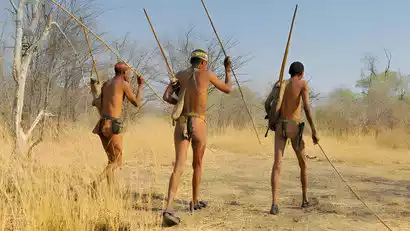
Day 9 Ghanzi (Botswana) → Windhoek (Namibia)
All day
After breakfast, we'll drive to Windhoek, Namibia's capital. Located in Namibia's central highlands at an altitude of 1,728 meters, Windhoek is surrounded by mountains to the south, north, and west, with many buildings nestled against the hills. This small yet vibrant city boasts a diverse architectural style and numerous well-preserved historical buildings, making it a rare destination for scenic photography.
In the evening, we planned to go to the local internet-famous restaurant [Joe's Beerhouse], which Hua Shao had eaten at. It is a specialty restaurant and bar opened by Germans, and they arranged a special German pork knuckle meal. At night, it was crowded with Chinese and foreign tourists gathering here to enjoy the lively atmosphere, and then we checked into the hotel to rest.
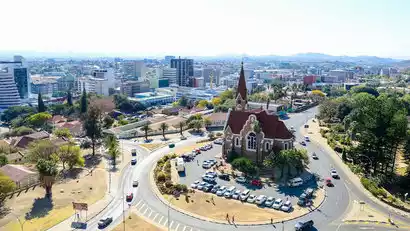
Day 10 Windhoek → Quiver Tree Estate (Truck)
All day
After an early breakfast at the hotel, we'll begin our day by truck to visit the Quiver Tree Estate. The quiver tree, actually an aloe barbadensis tree, gets its name from the fact that locals often hollow out its branches to use as quivers. These trees reach up to five meters tall and are approximately 200 years old. Quiver Tree Estate, home to approximately 250-300 large trees, is a national treasure and a famous tourist attraction, a unique feature of Namibia.
Tip 1: If the park is short of resources during peak season, please choose Central Lodge or similar hotels outside the park. Please understand that this will not affect your itinerary.
Warm reminder 2: Smoking is prohibited in Quiver Tree Park. If you smoke, you will face a huge fine of up to 5,000 Namibian dollars.
Tip 3: Drones are prohibited in Quiver Tree Park. Flying without permission will result in a hefty fine.
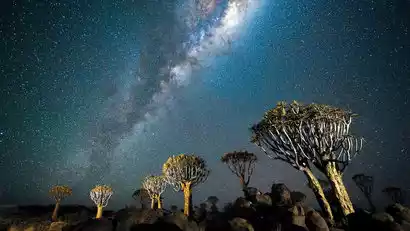
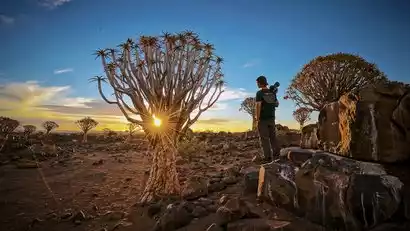
Day 11 Quiver Tree Manor → Cheetah Manor
All day
After breakfast at the hotel, we'll drive to Cheetah Luxury Manor for lunch. The drive takes approximately 3-4 hours. After lunch, we'll proceed with a China-TravelNote original tour, allowing us to observe cheetahs up close. A caretaker from the private conservation center will share stories about Namibian cheetahs and learn about cheetah conservation. Afterward, we'll check into the hotel and enjoy dinner.
[Special Note] Activities such as taking photos with cheetahs have been cancelled throughout Namibia
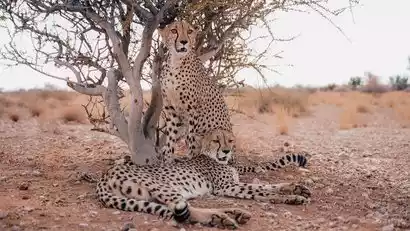
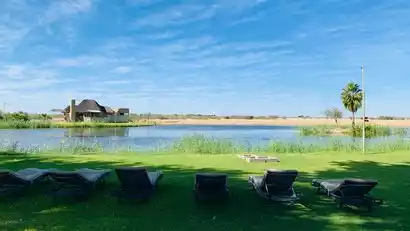
Day 12 Cheetah Manor → Sossusvlei Red Desert (Camping) (Truck)
All day
We got up early and drove to the Namib Desert, the oldest desert in the world.
After arriving at camp, we'll begin our tour of the Namib Desert. Crossing the vast expanse of flat sand, we'll enter the Namib Red Desert Scenic Area. Among the Sossusvlei dunes, considered the world's tallest, we'll walk along Dune 45, immersing ourselves in the heart of the red desert. The Namib's most beautiful landscape lies in Sossusvlei, and Dune 45 itself is the most beautiful of all: no matter how strong the monsoon, its iconic S-shaped shape remains. Dune 45 has become a signature feature of Namibia's red desert, having graced the covers of National Geographic and numerous travel magazines. But Dune 45 isn't the only one; there are countless other beautiful and diverse dunes, each a breathtaking spectacle.
Warm reminder: According to the regulations of the Namibian government, tourist buses must enter the Red Desert National Park after sunrise and exit before sunset.
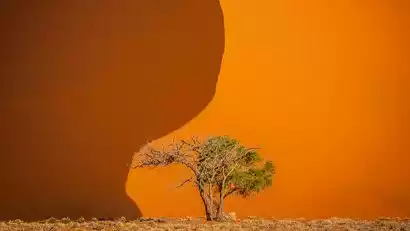
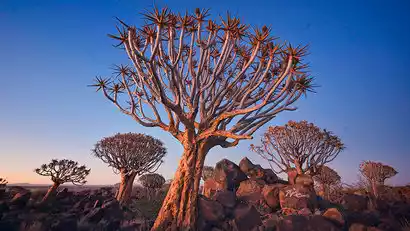
Day 13 Death Valley → Solitaire transfer → Whale Bay/Swa (Truck)
All day
Rise early and drive to Death Valley at sunrise, switching to a 4WD for a tour. Sand surrounds the valley, clouds bring rain, rain forms rivers, and water nurtures trees. Sand blocks the rivers, and the trees wither, creating Death Valley.
This unique wonder of life in Namibia awaits you upon arrival, as you walk into Death Valley to admire the thousand-year-old trees, a spectacle unique to the Namib Red Desert. The lakes dried up, leading to the extinction of flora and fauna. For 900 years, there has been no sign of life here. While animals have vanished, the dead trees have found a new life: trees that died centuries ago were quickly dried out, and unlike elsewhere, they have stood for centuries on the cracked marshland, displaying a withered, lifelike appearance.
We'll then transfer to Whale Bay via Solitaire. Solitaire is a world of cacti and classic cars, nestled amidst the vast wilderness, where bizarre cacti grow and a variety of classic cars are scattered around. The unique African landscape exudes a strong Western vibe!
Then we arrived at [Whale Bay], a coastal town. Although it is called a city, it is not very big. Here you can freely choose to eat along the seaside streets, choose to eat seafood in seaside restaurants, and there are also Chinese restaurants for you to choose from.
[Special Note]: According to the regulations of the Namibian government, tourist buses must enter the Red Desert National Park after sunrise and exit at sunset.
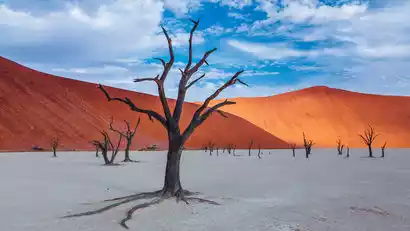
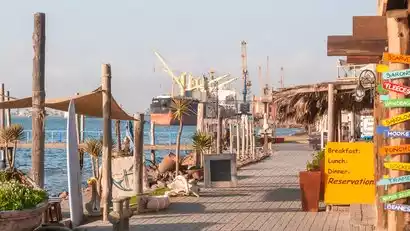
Day 14 Whale Bay (Fur Seal Kayak) / Swaziland
All day
After breakfast, head to the Symphony of Sand Sea - [Whale Bay]
Half of Namibia's life is in the desert, and the other half is in the ocean. Walvis Bay, Namibia's largest port city, is a place where you'll experience the stark contrast between the year-round desert and the icy, surging ocean. The stark contrast will leave you marveling at the wonders of nature.
Tourists has carefully selected a free activity for you to participate in! [Fur seal kayaking] Thousands of fur seals are visible. This is another fun animal interaction activity. Galloping through the ocean with thousands of adorable little fur seals, there's a high chance you'll see flamingos along the way! Not only that, since this activity requires transferring to an off-road 4WD vehicle, fur seal kayaking combines bird watching (flamingos) with kayaking and interacting with fur seals! After the activity, the guide will prepare a light meal (sandwiches, coffee, milk tea, etc.) before driving back to the hotel.
You can arrange the afternoon schedule freely.
1. Join the group to visit Swakopmund
2. You can freely choose your own expenses, such as skydiving (in Swakopmund) which is very cost-effective, or go sandboarding in Sandwich Bay (in Whale Bay).
Note: Self-funded projects must be booked 2-3 days in advance. It may be unavailable during peak season. Please understand.
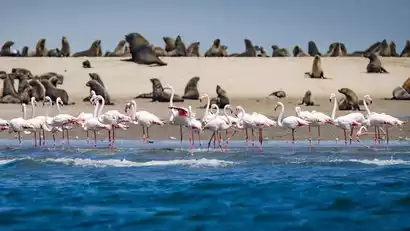
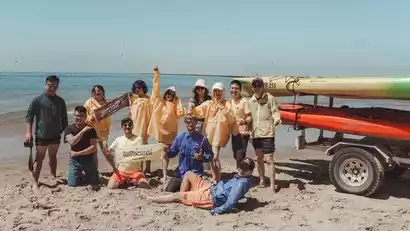
Day 15 Swaziland/Whale Bay → Red Clay Man Village → Windhoek (Truck)
All day
After breakfast, we will drive to the [Red Clay Man Tribe] to visit. The Himba tribe is a tribe that has maintained its original state in the remote areas of Africa, and still continues the living habits of more than 500 years ago.
They live in thatched huts in the jungle, with men herding and hunting outside and women tending to household chores and raising children. Ethnic cultural traditions evolve with the development of civilization, and some cultural phenomena will eventually become part of history and disappear in reality.
Perhaps in ten years we will only be able to see the Red Mud Tribe in video records, and then we will go to Windhoek to check into the hotel.
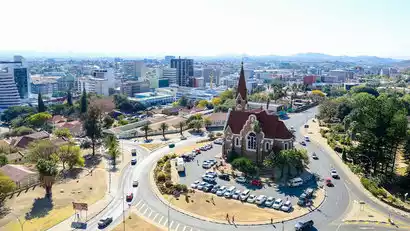
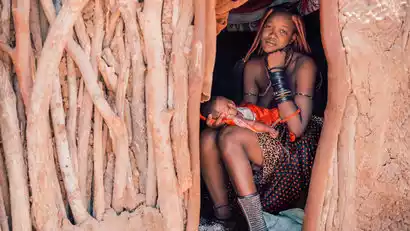
Day 16 Windhoek → Addis Ababa → Shanghai
All day
This morning you can rest up and drive to the airport in time to catch your international flight back to Shanghai (via Addis Ababa). This wild, exciting, and delightful four-country southern African adventure is coming to an end.
Day 17 Addis Ababa → Shanghai ★ Disbandment Day
All day
We will transfer in Addis Ababa, the capital of Ethiopia, and return to Shanghai. We are expected to arrive at Shanghai Pudong International Airport in the afternoon. The tourists will kiss goodbye with tears!








